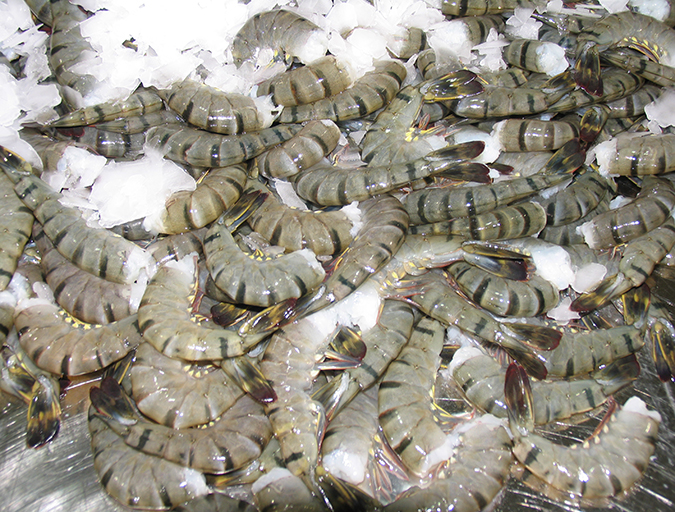Data collected by shrimp expert illustrates impact of disease

James Anderson delivered a data-rich survey on global shrimp and finfish production volumes for the Global Aquaculture Alliance at its GOAL (Global Outlook on Aquaculture Leadership) conference, held in October in Vancouver, Canada. His presentations has become a staple of the annual event.
(For complete GOAL coverage, see DAY 1, DAY 2, DAY 3 articles and photo galleries 1, 2 and 3.)
According to Anderson, director of the Institute for Sustainable Food Systems and professor of food and resource economics at the University of Florida, global shrimp production will soon recover from challenging diseases. Curtailed mainly by early mortality syndrome (EMS), global shrimp production fell 14 percent from 2011 to 2013, he told attendees.
But a bounce-back is in the offing, with production expected to return to 2011 levels in short order; Anderson projected an annual growth rate of 7.7 percent from 2013 to 2017. From 2006 to 2011, the annual growth rate for shrimp was 5.9 percent, according to Anderson’s numbers, which he noted were different from what the United Nations Food and Agriculture Organization (FAO) had projected (6.3 percent growth each year). FAO figures showed production increases from 2011 to 2013, a notable distinction from what the GAA data indicated, aligning with the “astronomical” price increases over that period, he said.
As for shrimp production in the near term, all small size categories of shrimp are expected to increase in supply, added Anderson, who previously led the World Bank’s Global Program on Fisheries and Aquaculture.
U.S. shrimp imports are expected to increase 4 percent overall in 2015. Imports from Thailand, which were hit hard by EMS, have declined sharply since peaking in 2010 at 203,000 MT but are expected to recover partially, from 65,000 to 72,000 tons. India, Indonesia and Ecuador have increased their shipments and become the top exporters to the U.S. market. See the video for further information and insights.
Author
-
Global Aquaculture Advocate
[103,114,111,46,101,99,110,97,105,108,108,97,97,103,64,114,111,116,105,100,101]
Tagged With
Related Posts

Innovation & Investment
GOAL 2015 Day 1: We stand on guard
The 2015 GOAL conference in Vancouver, Canada, kicked off with a First Nations celebration, an industry growth report card and the latest defensive efforts against aquaculture diseases. Simplifying the story, however, may be the tallest obstacle yet.

Innovation & Investment
GOAL 2015 Day 2: The story we choose to tell
If Day 1 of GOAL 2015 was all about defense, the following day of the aquaculture industry’s leading global conference was about offense — exuding confidence that farming fish is the way to feed future generations, and determining how to tell the world its story.

Innovation & Investment
GOAL Day 3: The greater good
A jam-packed three days of important dialogue in Vancouver was capped off by a keynote from the CEO of one of Canada’s oldest seafood companies, a suite of aquafeed innovations and a moving acceptance speech from Bill Herzig, the GAA Lifetime Achievement Award recipient.

Intelligence
GOAL Shrimp Production Survey: Recovery coming
The GOAL 2015 Shrimp Production Survey showed that global farmed shrimp production is rebounding from the decrease seen from 2011 to 2013 due to diseases, and is headed to an all-time high of around 4.8 million metric tons in 2017, barring any new crises.


